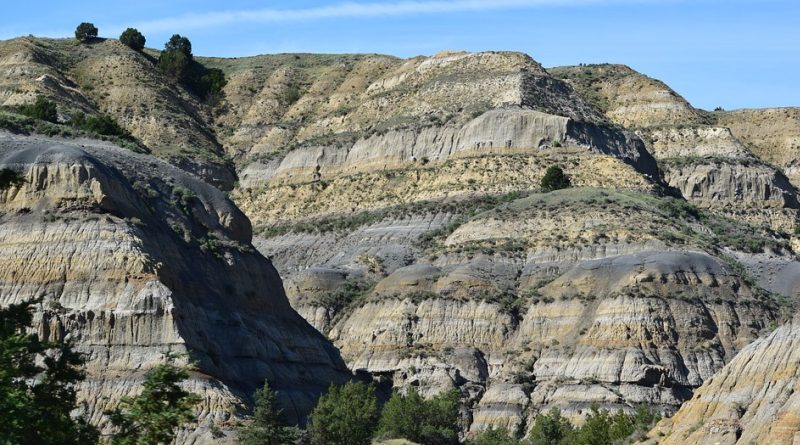North Dakota is the most rural of all the states, with farms covering more than 90% of the land. North Dakota ranks first in the nation’s production of spring and durum wheat; other agricultural products include barley, rye, sunflowers, dry edible beans, honey, oats, flaxseed, sugar beets, hay, beef cattle, sheep, and hogs. Situated in the geographical center of North America, North Dakota is subject to the extremes of a continental climate. Semiarid conditions prevail in the western half of the state, but in the east an average annual rainfall of 22 in., much of it falling in the crop-growing spring and summer months, enables the rich soil to yield abundantly.
North Dakota covers 68,976 sq miles and has a population of 634,110 according to the 2000 census. The ten largest cities are…Fargo, 90,599; the Capital city ofBismarck, 55,532; Grand Forks, 49,321; Minot, 36,567; Mandan, 16,718;Dickinson, 16,010; Jamestown, 15,527; West Fargo, 14,940; Williston, 12,512 and Wahpeton, 8,586. State symbols are; Tree, American Elm. Bird, Western Meadowlark. Song, North Dakota Hymn. Fish, Northern Pike. State March, Spirit of the Land. Flower, Wild Prairie Rose.
Points of interest include the International Peace Garden near Dunseith, Fort Union Trading Post National Historic Site near Williston, Knife River Indian Villages National Historic Site in Stanton, the State Capitol at Bismarck, the Badlands, Theodore Roosevelt National Park, and Fort Abraham Lincoln State Park.




